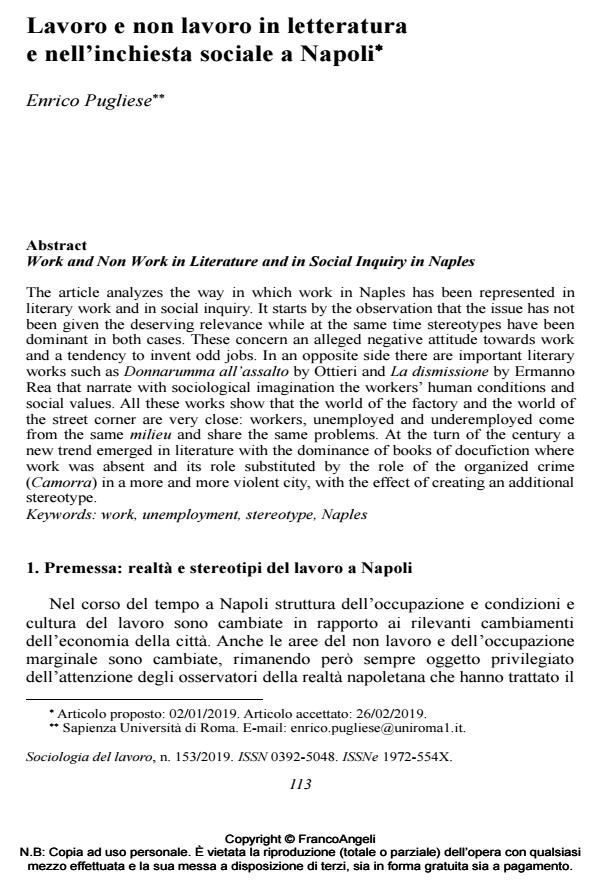Lavoro e non lavoro in letteratura e nell’inchiesta sociale a Napoli
Titolo Rivista SOCIOLOGIA DEL LAVORO
Autori/Curatori Enrico Pugliese
Anno di pubblicazione 2019 Fascicolo 2019/153
Lingua Italiano Numero pagine 16 P. 113-128 Dimensione file 274 KB
DOI 10.3280/SL2019-153007
Il DOI è il codice a barre della proprietà intellettuale: per saperne di più
clicca qui
Qui sotto puoi vedere in anteprima la prima pagina di questo articolo.
Se questo articolo ti interessa, lo puoi acquistare (e scaricare in formato pdf) seguendo le facili indicazioni per acquistare il download credit. Acquista Download Credits per scaricare questo Articolo in formato PDF

FrancoAngeli è membro della Publishers International Linking Association, Inc (PILA)associazione indipendente e non profit per facilitare (attraverso i servizi tecnologici implementati da CrossRef.org) l’accesso degli studiosi ai contenuti digitali nelle pubblicazioni professionali e scientifiche
L’articolo affronta il modo in cui è stato rappresentato il lavoro a Napoli in opere letterarie e di analisi sociali, ritenendo che in entrambe la tematica ha goduto di scarsa rilevanza e ha contribuito alla diffusione di stereotipi basati sulla indisponi-bilità a lavorare (regolarmente) a fronte di una creativa ‘arte di arrangiarsi’. In di-rezione opposta vanno diverse importanti opere letterarie come Donnarumma all’assalto di Ottieri e La dismissione di Rea che con grande immaginazione socio-logica raccontano la condizione operaia e i suoi valori. Questo tipo di analisi mo-stra che il mondo della fabbrica e quello del vicolo sono molto vicini: disoccupati, sottoccupati e lavoratori al nero provengono dagli stessi ambienti e avvertono gli stessi problemi. A partire dalla fine del Novecento si sono imposte opere a caratte-re di docufiction nelle quali nuovamente il lavoro scompariva sostituito dal ruolo centrale della camorra in una città descritta come sempre più violenta, con l’effetto di creare un nuovo stereotipo.
Parole chiave:Lavoro, disoccupazione, stereotipi, Napoli
Enrico Pugliese, Lavoro e non lavoro in letteratura e nell’inchiesta sociale a Napoli in "SOCIOLOGIA DEL LAVORO " 153/2019, pp 113-128, DOI: 10.3280/SL2019-153007